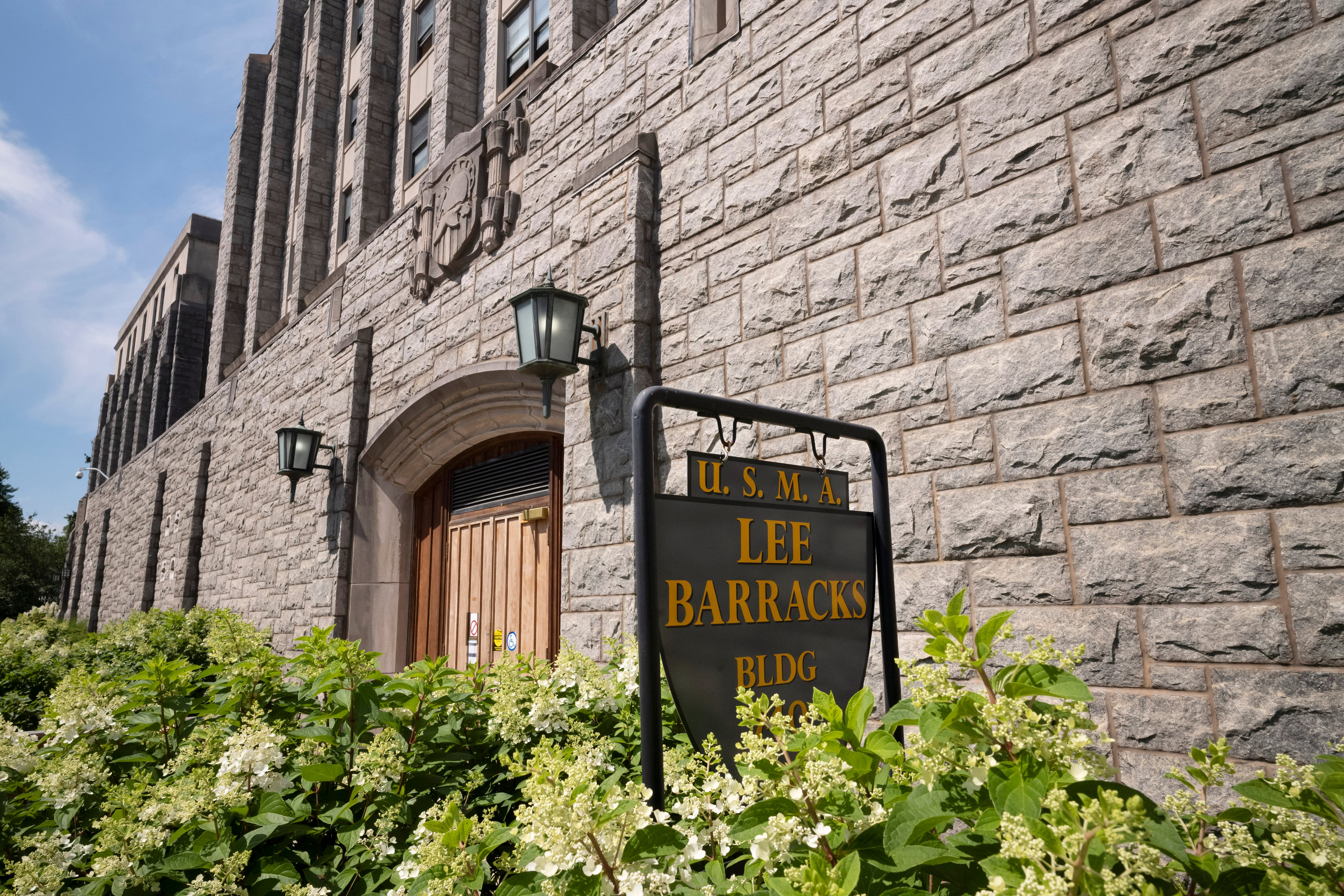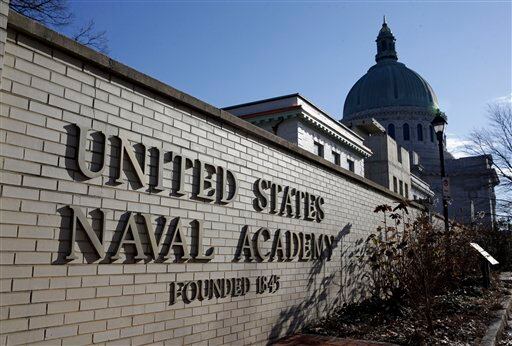Editor’s note: this story has been updated.
The Navy has removed the name of a member of the Confederacy from a building on the U.S. Naval Academy’s campus and renamed the hall after former President and “Ring Knocker” Jimmy Carter.
The building, constructed in the early 1900s, was originally named after Matthew Fontaine Maury, an oceanography pioneer — known as the “pathfinder of the seas” — who resigned his U.S. commission to serve in the Confederate States Navy.
The name change comes after Congress directed a naming commission to review military assets and rename those with Confederate ties following the murder of George Floyd by police in 2020.
Defense Secretary Lloyd Austin accepted the commission’s recommendations in September and ordered the services to make the changes by the end of this year.
The newly minted Carter Hall houses the academy’s political science and languages and cultures departments.
RELATED

In addition to his role as the 39th U.S. president, Carter graduated from the academy in 1946 and spent seven years in service as a submarine officer.
“By naming this building in his honor, we not only recognize his great contributions, but ensure that his legacy will forever inspire our nation’s future leaders,” Naval Academy Superintendent Vice Adm. Sean Buck said at the renaming ceremony, according to a Navy press release.
Renaming the hall is expected to cost the Navy $12,000, according to the naming commission’s report.
That report also calls for the Navy to change the name of Buchanan House and Buchanan Road, two academy fixtures named in honor of Franklin Buchanan, the academy’s first superintendent who joined the Confederacy, rose to the rank of admiral and commanded several naval battles that killed hundreds of U.S. sailors.
The Navy has not announced the status of that renaming effort, and officials did not return a request for comment by Navy Times’ deadline Friday.
Both Naval Academy buildings were named after the traitors in 1915, when the “Lost Cause” notion propagated the idea that the Confederate effort was a righteous battle for the rights of southern states.
Approximately 25 percent of academy midshipmen joined and fought for the Confederacy in 1861, according to the commission report. The commission did not recommended a change to a column in Memorial Hall that lists academy graduates who died during naval operations in service to the Confederacy.
“The roll call simply states Confederate or U.S. service after the graduate’s name,” the commission report states. “Due to the limited factual nature of the roll call, the Commission believes it may remain as structured.”
The commission also recommended renaming the guided-missile cruiser Chancellorsville, which is named after the location of a Confederate victory, as well as a ship named after Maury. The Navy has not provided further details on those efforts.
Left unaddressed is the aircraft carrier John C. Stennis, which was named after the segregationist senator known as the father of the modern navy. Stennis fought Chief of Naval Operations Adm. Elmo Zumwalt’s efforts to implement cultural changes in the service in response to racial unrest, retired Navy officer John Cordle wrote in an October opinion piece calling for the carrier’s name to be changed.
RELATED

“During a meeting with Zumwalt, Stennis opined that ‘they [Blacks] had come down from the trees a lot later than we did,’ according to Zumwalt’s memoir, ‘On Watch,’” Cordle wrote.
Earlier in his career, Stennis prosecuted three Black sharecroppers who, through torture, had been forced into a confession, thus winning convictions and death sentences that were eventually overturned by the U.S. Supreme Court, according to Cordle.
President Ronald Reagan named CVN 74 after Stennis in 1988.
“It would not only be historically correct, but morally correct, that this issue be directly addressed by Congress and the Navy,” Cordle wrote. “Without question, Stennis perpetuated and personified racist beliefs.”
Cordle noted that renaming the ship would honor past and present Stennis sailors, and included in his piece the thoughts of a Black junior Navy officer:
“We display artifacts that speak to our values, and we leave them to our children. It shapes the identity of who we are for future generations,” the officer said, according to Cordle. “Changing (Stennis’ name) would show that we have faced our history — and learned from it.”
Correction: an earlier version of this report misstated the departments housed in Carter Hall. The building houses the political science and languages and culture departments.
Geoff is the managing editor of Military Times, but he still loves writing stories. He covered Iraq and Afghanistan extensively and was a reporter at the Chicago Tribune. He welcomes any and all kinds of tips at geoffz@militarytimes.com.





